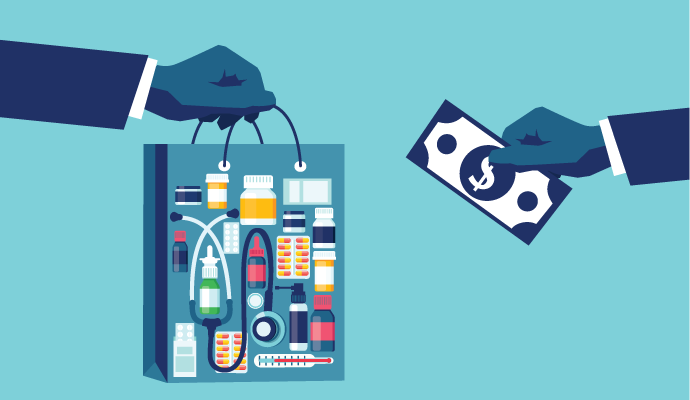Invoice-Based Drug Reimbursement Did Not Cut Medicaid Spending
In the period after switching from price-based payment, there was less than a 0.1 percent reduction in per unit Medicaid spending used invoice-based drug reimbursement, according to a study.

Source: Thinkstock
- In states that switched to drug reimbursement models where results were based on a survey of pharmacy invoices, researchers found no effect on overall Medicaid outpatient drug spending, according to a Health Affairs study.
Adoption of National Average Drug Acquisition Cost pricing in 2013 was expected to lower the amount that fee-for-service Medicaid programs paid for ingredient costs of outpatient drugs.
In the fourth quarter of 2013, most states used list-priced based reimbursements and maintained low dispensing fees.
The median dispensing fee was $3.83 per unit, compared to a median of $10.38 for the few states with acquisition cost–based reimbursements at the time.
“As states shifted to the new acquisition-based model, their dispensing fees increased. By the fourth quarter of 2018, states that had implemented such a model had dispensing fees fairly tightly clustered around a median of $10.57,” researchers said.
But total fee-for-service drug spending remained largely unaffected.
“In abandoning list price–based reimbursements, fee-for-service Medicaid appears to have transitioned to a model that relies more on dispensing fees to reimburse pharmacies,” researchers explained.
Specifically, across all states, the median dispensing fee had increased by 163 percent over the five-year period.
Researchers leveraged CMS’s State Drug Utilization Data from 2010 through 2018. During this time, 41 states switched to an invoice-based reimbursement model to assess the impact the new payment mechanism would have on Medicaid spending on outpatient drugs.
As part of the four-step method, researchers first dropped the 0.78 percent of observations in which the number of prescriptions exceeded the number of units dispensed. Then, they excluded observations in which spending was significantly high.
Finally, they dropped observations in which spending per unit exceeded five standard deviations above the mean for the relevant code and dropped 2.9 percent of cases in which fewer than 100 units were prescribed.
The data was then collapsed into the state-quarter level.
“The validity of our empirical design rested on the assumption that our estimated time trends represented a reasonable counterfactual for what would have occurred absent a policy change,” researchers said.
“We were most concerned with changes that affected Medicaid drug spending at the same time as the policy change we were analyzing.”
Overall, there was little evidence that average total fee-for-service Medicaid outpatient drug spending was reduced in the period after switching.
Five years after the policy change, point estimates indicated less than a 0.5 percent increase. And coefficients in the period after switching were extremely small, with point estimates indicating less than a 0.1 percent reduction in per unit spending, researchers said.
In recent years many state fee-for-service Medicaid programs have abandoned the use of list prices in their formulas for reimbursing pharmacies for dispensing outpatient drugs.
Instead, they now use data from pharmacy invoices to better estimate acquisition costs.
But researchers voiced ways that invoiced-based payments could be improved.
The first suggestion was for pharmacies with low invoices to choose not to participate in the voluntary survey in an effort to maintain higher Medicaid payment rates.
Additionally, invoicing practices may have shifted over the study period. If pharmacies and wholesalers increasingly use off-invoice discounts, then on-invoice ingredient costs will rise.
“Moving from list price–based reimbursement to invoice-based models appears to have changed the composition of fee-for-service Medicaid payments to pharmacies but to have had little effect on total outpatient drug spending,” researchers said.
“There are likely ways to further improve the accuracy of invoice-based pricing models and alter total payments if they are seen as too generous.”
